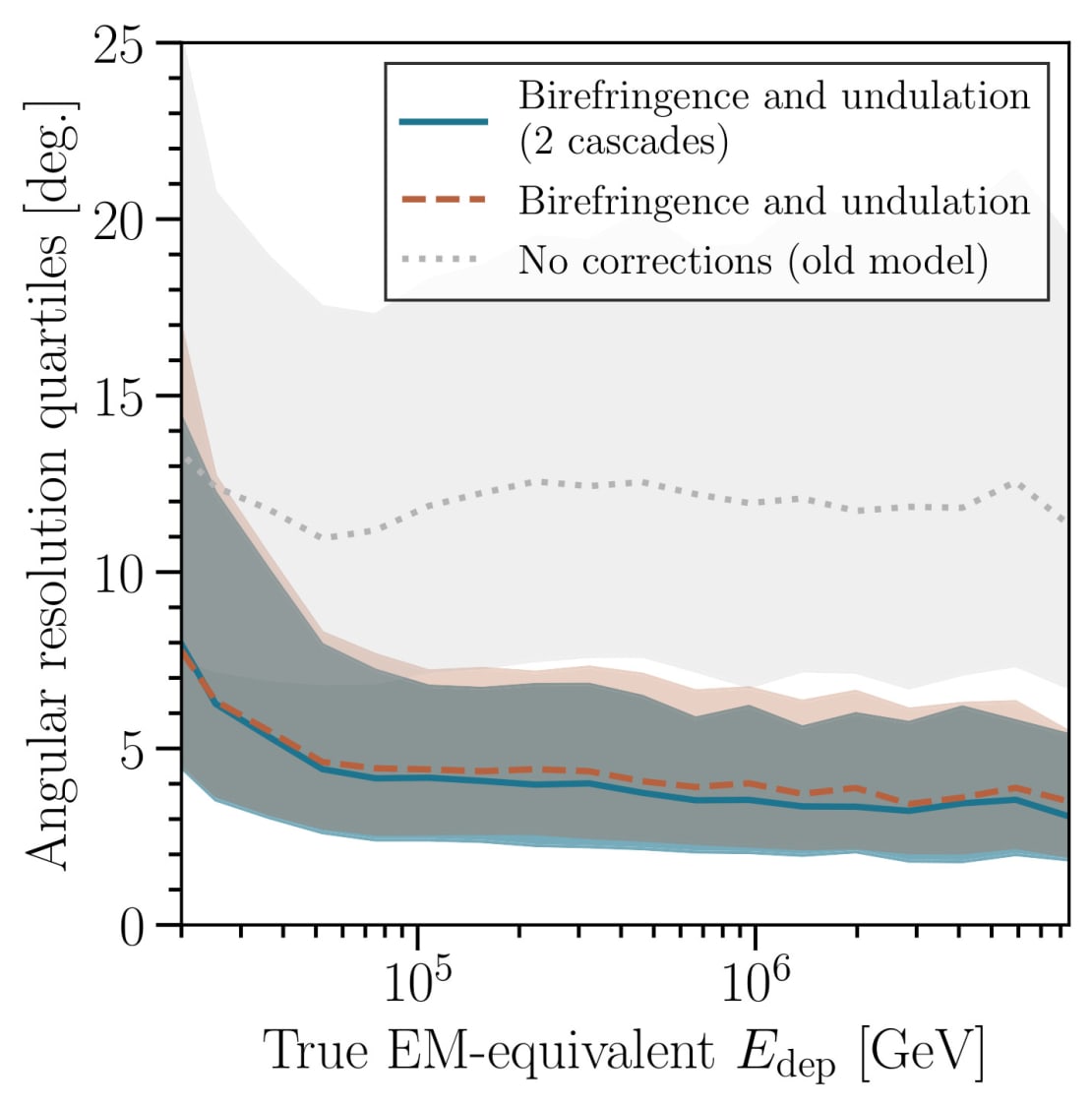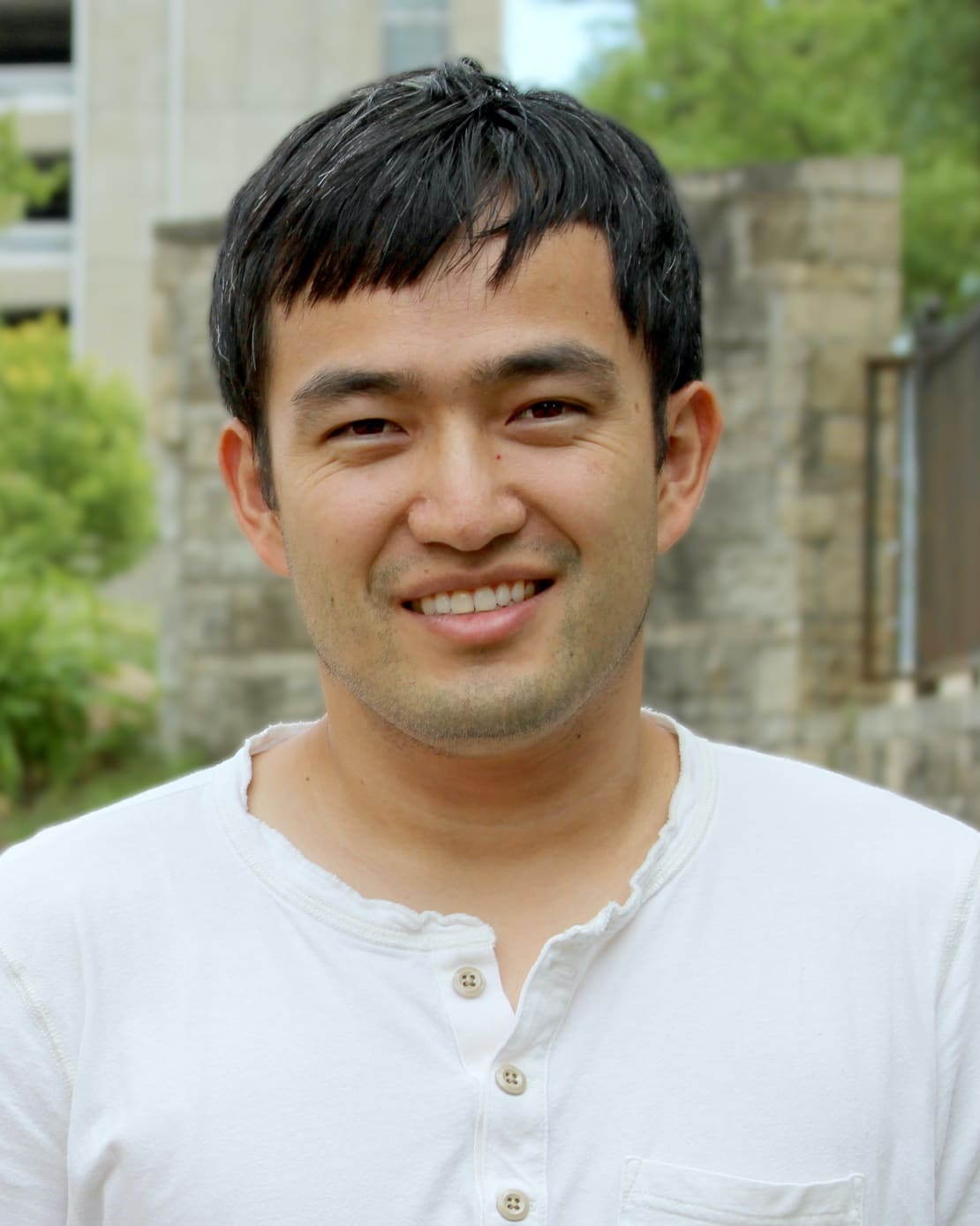The IceCube neutrino detector, embedded in a cubic kilometer of Antarctic ice, searches for high-energy neutrinos from the farthest reaches of outer space. The pristine ice serves as a natural medium for detecting showers of secondary charged particles that result from many neutrino interaction types in the ice. Through a process called Cherenkov radiation, ultraviolet light is emitted from the secondary charged particles. This light is then picked up by an array of 5,160 optical sensors. A high-energy particle shower in IceCube appears as a roughly spherical blob of light across the array.
These blobs, or “cascade events,” can be used to reconstruct the energy and direction of the neutrino in order to determine its origin. However, measuring the direction of cascade events accurately can be quite challenging due to their fuzzy reconstruction patterns, the sparseness of the instrumentation, and the complexity of the South Pole ice properties.
In a new study submitted to the Journal of Instrumentation, the IceCube Collaboration presents an improved model of in-ice particle showers for event reconstruction based on current knowledge of ice optical properties. The median angular resolution for in-ice particle showers improved by more than a factor of three compared to reconstructions based on a simplified model of the ice.

“We’ve really had a revolution in our understanding of the ice model in recent years, and we knew that our older reconstruction model hadn’t kept up with the changes, amongst some other issues,” says Tianlu Yuan, an assistant scientist at the Wisconsin IceCube Particle Astrophysics Center and lead on the study. “Initially, we just wanted to understand what caused some of the issues we were seeing in the old model.”

Yuan first simulated particle showers in the ice and tabulated their Cherenkov photoelectron yields and time profiles. These are heavily influenced by anisotropies in the ice. After fitting a smooth function to the tabulated data and testing the model under simplified ice conditions, Yuan looked at more complicated ice properties, such as birefringence and ice layer undulations.
When corrections to account for birefringence, ice layer undulations, and the shower extension were included in reconstruction, there was an improvement by more than a factor of three in the median angular resolution for a simulated dataset of in-ice particle showers. In other words, the inferred direction for each event, on average, more closely matched the true direction.
“We see a substantial overall improvement over the old model. We also see that even the longitudinal extension of electron-neutrino–induced particle showers, which are typically much shorter than the length scales of the instrumentation, can be measured while yielding some further improvement in the angular resolution,” says Yuan.
A more accurate model for event reconstruction will aid many future IceCube analyses where accurate directional information is key, including searches for astrophysical sources. Moreover, these improvements will lead to better reconstruction of high-energy muons or “track” events that leave a trail of particle showers as they pass through the detector.
+ info “Improved modeling of in-ice particle showers for IceCube event reconstruction,” IceCube Collaboration: R. Abbasi et al., arxiv.org/abs/2403.02470